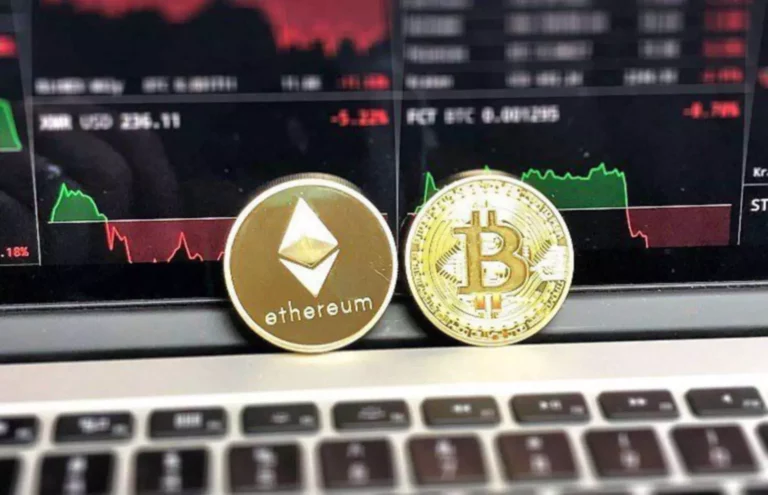Finally, the third part is the methodology section, that is, the frequency connectedness framework of Brunik and Krehlik (2016). This framework allows us to capture the time–frequency dynamics of the liquidity connectedness among cryptocurrency markets. The increased number of trusted Bitcoin exchanges allowed more people to trade their coins. The increase in frequency and volume of trading helps to enhance liquidity. As popular exchanges become more secure, more of these holders are willing to trade their bitcoins, which adds buyers and sellers.

Crypto has ceased to be a technological curiosity for a group of enthusiasts and has become a full-fledged alternative investment asset, also for the largest investment funds. The deep slump is not conducive to high investment activity, but this is a different market. High volumes will return as the macro situation changes to favor risky assets. Financial analysts look at a firm’s ability to use liquid assets to cover its short-term obligations. Generally, when using these formulas, a ratio greater than one is desirable.
Are you curious to learn how crypto can help you pass your funded account challenge and boost your funded profits? The top 20 world economies, known as G20, are endorsing a unified international framework for overseeing and reporting digital currency transactions, emphasizing stablecoins. Investments in privately held companies typically have limited liquidity because there is no public market for trading these shares. Direct ownership of real estate and cars can be relatively illiquid, as it can take time and effort to buy or sell them.

However, the BTC/LTC pair always appears in the same cluster, showing the complementary nature of assets under different scenarios. From another perspective, Dash and ETH appear in different liquidity clusters, indicating the substitution opportunities in different frequency domains. Nevertheless, the spread of liquidity clustering in the full-sample and frequency domains remains unaffected. We use an alternative measure of liquidity developed by Fong et al. (2018) to further validate the findings of our liquidity connectedness and clustering results. Figure 7a–d shows the full-sample and three frequency domains, that is, short-, medium-, and long-run network connectedness results.
Overall, the full sample results show moderate liquidity connectedness among cryptocurrencies, with BTC and LTC being the prominent actors in terms of magnitude. Consequently, the BTC/LTC pair could serve as a strong complement in a portfolio as they also maintain a strong (weak) return (volatility) connectedness (Ji et al. 2019). In an economic context, the complimentary liquidity attributes of different cryptocurrencies suggest profitable avenues for an investor operating in the cryptocurrency market. Specifically, these opportunities can provide sizable economic profits when the right combination of cryptocurrencies is used to form investment portfolios, that is, BTC and LTC. Moreover, long-term investors holding portfolios of complementary cryptocurrencies can benefit from price explosiveness episodes frequently observed in the cryptocurrency market. Hence, investors can group complementary cryptocurrencies into their portfolios to make most of the opportunities available in the market.
- One way a market achieves liquidity is through the use of order books, like in a stock market.
- Speaking about the liquidity in crypto markets, the higher this measure is, the more funds and trades are made in the market.
- A current ratio of below 1 means a company’s short-term assets are not enough to meet its current debt obligations.
- This observation of the contagion effect in the cryptocurrency market has also been reported in the volatility connectedness in cryptocurrency markets (Yi et al. 2018).
- BTC, along with LTC and XRP, appears as a leading contributor to the liquidity connectedness in the short run.
Use technical analysis for EUR/USD, and tread cautiously with USD/JPY due to the unpredictable Bank of Japan. If you want to learn more about “pump and dump” and market manipulation, you can read the FOMO section of our tips for what is crypto liquidity trading crypto. Before we delve deep into the details, it’s important to define liquidity in broad strokes, so that we are all on the same page. Below, you will find both the general definition and how it applies to crypto.

The 2 most common indicators to assess liquidity is volume and the Bid-Ask spread. Liquidity refers to the degree to which a particular asset can be quickly bought or sold without affecting the general stability of its price. Learn more about Consensus 2024, CoinDesk’s longest-running and most influential event that brings together all sides of crypto, blockchain and Web3.
In other words, where on the chart we can reasonably expect increased buying or selling interest. Especially when the market liquidity is limited, larger players must push prices into those areas in order to get in or out of their positions. Liquidity in cryptocurrency is determined by the number of interested buyers https://www.xcritical.in/ and sellers. Increased market participation means increased liquidity, which can be a signal of increased market data dissemination. Liquidity in cryptocurrency means the ease with which a digital currency or token can be converted to another digital asset or cash without impacting the price and vice-versa.
In its most simple form, liquidity refers to how easy it is to convert cryptocurrency into cash quickly — and whether this can be achieved without the asset’s value suffering. Bitcoin, the world’s first and most actively traded digital asset, is often recognized as being the most liquid virtual currency. Liquidity in cryptocurrency markets essentially refers to the ease with which tokens can be swapped to other tokens (or to government issued fiat currencies). One way a market achieves liquidity is through the use of order books, like in a stock market. In the context of cryptocurrency, liquidity signifies the ease of converting digital tokens into other assets (digital or cash) without significantly affecting the token’s price.
Market makers provide liquidity by continuously placing orders to buy and sell at different prices in order to create a market for the asset. High-frequency traders use sophisticated algorithms to take advantage of small price discrepancies in the market in order to make a profit. Both of these activities help to ensure that a centralized exchange is able to provide liquidity for its users. Liquidity in the stock market refers to the ease with which a particular stock can be bought or sold in the market without significantly affecting its price.
His research areas include corporate finance, financial market comovement, and financial econometrics. Syed Jawad Hussain Shahzad is Professor of Finance at Finance, Control and Law Department of Montpellier Business School, Montpellier France. Muhammad Abubakr Naeem is a Research Scientist at Smurfit Graduate School of Business, University College Dublin, Ireland. His areas of research interest include systemic risk, asset pricing and hedging strategies.
At the same time, a spike in volatility can also lead to a drop in liquidity as panic selling follows and bid-ask spreads widen. Volatility plays an essential role in any trading market, particularly in cryptocurrency. In traditional finance, volatility is described by the degree to which the price of an asset fluctuates over time. An investment is considered volatile if its price moves up or down aggressively daily. Cash is the most liquid asset, followed by cash equivalents, which are things like money market accounts, certificates of deposit (CDs), or time deposits.
Greater trading volume equates to more trading activity (selling and buying) and is therefore a liquid market. Additionally, a higher volume backing a market trend – either a decrease or increase in cryptocurrency prices – signifies higher market activity backing the overall trend. For example, a drop with considerable volume behind it might mean a coin is in for an extended bear run.
